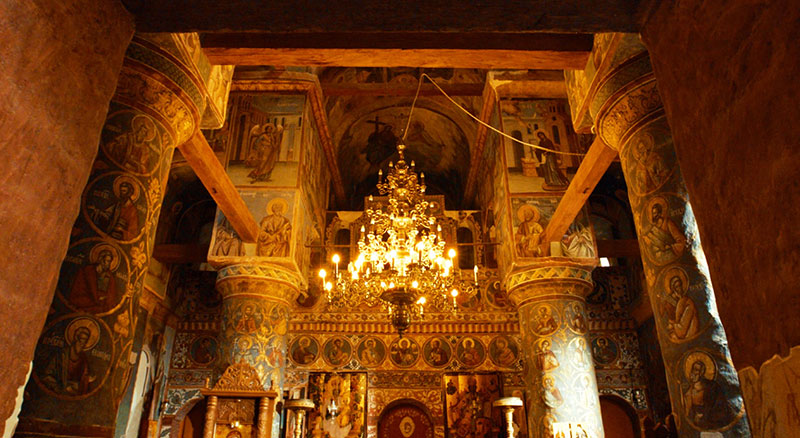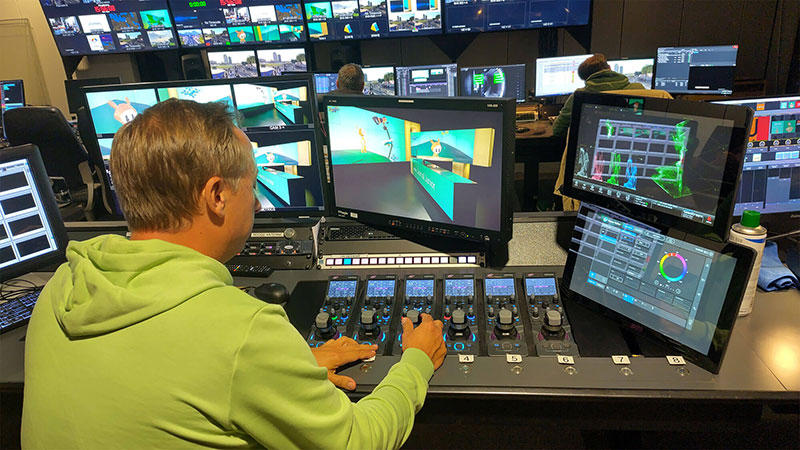RTVE’s programme is the first TV production in Spain to use large-format camera sensors, producing concerts with cinematic image quality and a reduced depth of field.

In early December, Spain's RTVE (Radio Televisión Española) began broadcasting its live programme Los Conciertos de Radio 3 using Sony FX9 full frame sensor cameras. The show became Spain’s first live TV production to achieve a cinematic look and image quality for home viewers.
The music programme’s production had been planning to upgrade to HD standard video for more than a year, replacing the 2/3-inch format SD units with full frame sensor cameras, intending ultimately to be able to broadcast in 4K and capture a shallower depth of field.
“At the same time, an important requirement was to maintain the previous production workflows," commented Francisco Collado, Assistant Director of Engineering and Support for Studios and Mobile Units at RTVE. “These include remote control of the cameras and production in RTVE's Prado del Rey studios in Madrid, using the existing Remote Control Panels (RCPs) to access the camera menus.”

When the programme team had originally considered the Sony FX9s, the advantages of working with a full-frame camera was one of their main arguments. A larger sensor size captures more light and detail, resulting in sharper images with greater dynamic range and more accurate colours. During a live broadcast, the large-format sensor’s shallow depth of field gives a level of control of the narrative by focusing the viewer's attention where desired, moment by moment, while blurring other elements out of focus.
Lenses, Lighting and Dynamic Range
RTVE’s team studied the different sensor sizes – full frame and Super35 – that the camera would allow, plus the associated adaptations to their operations. One interesting challenge of the migration has been the use of new lenses to fit this type of sensor, which would affect, for example, the viewing angles, zoom capabilities, bokeh effects or the depth of field.
These cameras are able to handle uneven, unpredictable lighting conditions, such as high contrast or low light environments, without losing quality. This is crucial at live events such as 'Los Conciertos de Radio 3', where conditions can change quickly and there is no opportunity for further adjustment. The ability to shoot in high resolutions, such as 4K, ensures that every detail is captured with clarity, to make visual experiences feel closer and more realistic to the audience.

A key aspect of live recording of this kind is dynamic range. The Sony FX9 camera is capable of capturing detail in both the brightest areas of the stage and the darkest areas, allowing users to play with focus on any point of interest such as instruments, reflections on surfaces, signs and so on – even the remote head. A wider dynamic range allows the camera to record a wider range of light levels, resulting in more balanced and detailed images, less noise and ultimately richer, more natural colours.
Real-time Autofocus
The camera's autofocus automatically adjusts in real time to keep a selected subject clearly in focus, even if it moves, which typically happens at a concert. The auto focus is precise as well, making it easier for camera operators to concentrate on other aspects of shooting such as composition and framing. Otherwise, at these shallow depths of field, someone needs to continuously adjust focus manually.

"The camera operators have had to adapt to the new way of working but, on the other hand, it has given them new options for creativity. The fast autofocus reacts immediately to the rapid changes in a concert, producing a very memorable visual experience," said Pedro Pablo del Cura, Chief Producer of Los Conciertos de Radio 3.
Now, from wherever they are, viewers of Los Conciertos de Radio 3 can enjoy every detail and every note of this live programme as if they were in the front row of the concert – a leap into the future of audiovisual production. It has also been significant for RTVE to become the first broadcaster on Spanish television to deliver programming with a cinematographic aesthetic.
"Sony's large-format sensor camera and accurate autofocus has given us artistic possibilities that completely change the aesthetics of facilitating a narrative through images," Pedro said. pro.sony




















